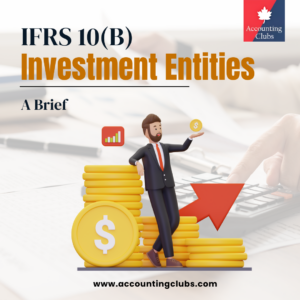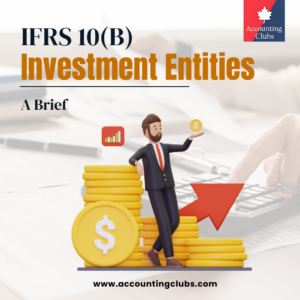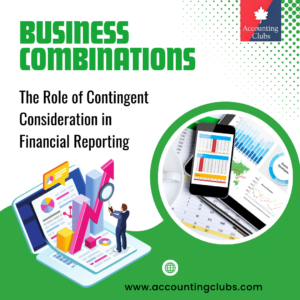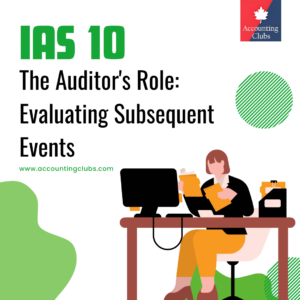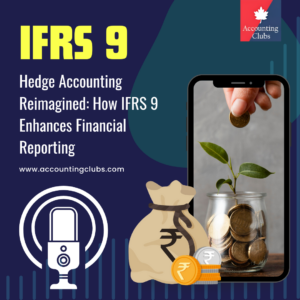Chapter 2: Recognition
Government grants should not be recognised until there is reasonable assurance that the entity will comply with the conditions attaching to it and that the grant will be received. Reasonable assurance is not defined in IFRS and significant judgment is therefore required when the recognition criteria under IAS 20 is applied in practice.
The manner in which a grant is received does not affect the accounting method to be adopted in regard to the grant. A grant is accounted for in the same way whether it is received in cash or as a reduction of a liability to the government.
Government grants are recognised in the income statement on a systematic basis over the periods in which the related costs towards which they are intended to compensate are recognised as expenses.
Grants for specific expenses are recognised in profit or loss in the same period as the relevant expense. Grants related to depreciable assets are usually recognised in profit or loss over the periods and in the proportions in which depreciation expense on those assets is recognised. The relationship between the grant and the related expenditure is, therefore, of paramount importance in establishing the accounting treatment.
Government loans that are forgivable, when there is reasonable assurance that the entity will meet the terms for forgiveness of the loan, or where a government loan is below market rate, are grants that should be accounted for in accordance with the standard.
Grants may be received as part of a package of financial or fiscal aids where a number of conditions are attached. Care is needed in identifying the conditions giving rise to costs and expenses that determine the periods over which the grant will be earned. It may be appropriate to allocate part of the grant on one basis (asset related grant) and part on another (income related grant).
It will then be possible to account for each part of the grant differently according to the types of different costs and expenses towards which it is intended to compensate. If the grant requires the fulfilment of different obligations, it should then be recognised in the income statement over the periods in which the related costs and expenses of meeting the obligations are recognised.
Difficulties of identifying the related expense that is intended to compensate for a grant Difficulties of identifying the related expenses that are intended to compensate for the grant may arise where the grant’s terms do not specify the expenditure towards which it is intended to contribute.
In practice, grants may be awarded to defray project costs comprising both income and capital expenditure. Project grants may be related, for example, to the project’s capital expenditure costs and the number of jobs created or safeguarded.
In such circumstances, the expenditure eligible for grant aid may be all the costs incurred that are directly attributable to the project. The terms of the grant itself often need to be carefully examined whether the intent is to defray costs or to establish a condition relating to the grant’s entire amount.
Example − Asset or income grant?
An entity obtains a grant from an industrial development agency for an investment project. The project is a building to house a manufacturing plant. The principal terms are that the grant payments relate to the level of capital expenditure and the grant’s intention is to help ensure that imports of the product can be replaced with products produced in the country and to safeguard 500 jobs.
The grant will have to be repaid if there is an underspend on capital or if the jobs are not safeguarded until 18 months after the date of the last fixed asset purchase. This grant is related to capital expenditure.
Thus, under IAS 20 it is an asset related grant. The employment condition should be seen as an additional condition to prevent replacement of labour by capital, rather than as the reason for the grant. If the grant were income related, it would be related to income expenditure such as a percentage of the payroll cost or a fixed amount per job safeguarded.
Allocating a grant to the identified expenditure Sometimes the actual expenditure that the grant is intended to compensate for may differ from the expenditure that forms the basis of its payment.
For example, the grant may relate to a total project expenditure that may include, in addition to capital expenditure, working capital costs, training costs and removal costs. However, the grant may become receivable in instalments on incurring specific amounts of capital expenditure as the project progresses.
It would be inappropriate to allocate the entire grant to the capital expenditure alone. The most appropriate treatment, therefore, would be to allocate the grant received rateably to the expenditure towards which the grant is intended to compensate.
Thus, the grant would be spread rateably over the constituent parts of the project expenditure. This appropriately allocates part of the grant on one basis and part on another basis.
Therefore, where the evidence that the grant is attached to a group of conditions exists and is sufficiently persuasive, it is appropriate to allocate grants received to the identified expenditure which the grant is intended to compensate.
Grant payable on achievement of a non-financial goal Grants may be receivable on a different basis, for example, on the achievement of a non-financial objective. The grant should be intended to compensate for the identifiable costs of achieving that objective. Such costs must be identified or estimated on a reasonable basis.
For example, if a grant to support the manufacture of a new product is given on condition that jobs are created and maintained for a minimum period, the grant should be recognised over the period for which the cost of providing the jobs is recognised as expenses.
A greater proportion of the grant may fall to be recognised in the project’s early stages because of higher non-productive and set-up costs that the grant is intended to compensate. Entity A is awarded a government grant of C60,000 receivable over three years (C40,000 in year 1 and C10,000 in each of years 2 and 3), contingent on creating 10 new jobs and maintaining them for three years.
The employees are recruited at a total cost of C30,000, and the wage bill for the first year is C100,000, rising by C10,000 in each of the subsequent years. The income of C60,000 should be recognised over the three-year period to compensate for the related costs.
In year 1, C21,667 of the C40,000 received from government will compensate for the related costs of C130,000 incurred during the year, and should, therefore, be recognised as income. The amount of the grant that has not yet been credited to income (that is C18,333, being C40,000 of cash received less C21,667 credited to income) is reflected in the balance sheet.
Year Labour cost Grant income Grant calculations Deferred income Calculations 1 130,000 21,667 60,000 × (130/360) 18,333 (40,000 − 21,667) 2 110,000 18,333 60,000 × (110/360) 10,000 (50,000 − 40,000) 3 120,000 20,000 60,000 × (120/360) − 360,000 60,000
Government grants may in certain circumstances be awarded unconditionally without regard to the entity’s future actions, or requirement to incur further costs. Such grants may be given for the entity’s immediate financial support, or assistance, or for the reimbursement of costs previously incurred. They may also be given to finance an entity’s general activities over a specified period, or to compensate for a loss of income. Grants awarded on such a basis are recognised in the income statement in the period in which they become receivable.
Grant received unconditionally Entity A incurred expenses of C5,000 that related to training employees during the period May 20X1 to September 20X1. The employee training was required by government.
Entity A entered into negotiations with the government for compensation for the training expenses incurred in December 20X1. In February 20X2 the government agreed that it would compensate the entity for the expenses incurred for the year ended 31 December 20X1.
Although entity A incurred the expenses for the year ended 31 December 20X1, it should recognise the income received from the government for the year ended 31 December 20X2. The grant of C5,000 will only become receivable when the government agrees to compensate entity A for the training expenses in February 20X2.
Recognition in profit or loss
Government grants to be recognized in profit or loss on a systematic basis
Government grants are recognized in profit or loss on a systematic basis over the periods in which the entity recognizes as expenses the related costs for which the grants are intended to compensate.
IAS 20 clearly rules out what is referred to as the ‘capital approach’ to the accounting treatment of government grants (under which grants are recognized outside profit or loss), in favor of the ‘income approach’. The arguments in support of the income approach are as follows:
- government grants are receipts from a source other than shareholders, and therefore they should not be recognized directly in equity but should be recognized in profit or loss in appropriate periods;
- government grants are rarely given free of obligations, but are earned by the entity through compliance with the conditions attached and, therefore, ought to be recognized in profit or loss over the periods in which the entity recognizes as expenses the related costs for which the grant is intended to compensate; and
- just as income and other taxes are expenses, it is logical to deal with government grants, which are an extension of fiscal policies, in profit or loss.
Consistent with IAS 1, the income approach requires application of the accruals concept by recognizing government grants in profit or loss on a systematic basis over the periods in which the entity recognizes as expenses the related costs.
In other words, grants are not recognized on receipt unless no rational basis exists for allocating the grant to a period other than the one in which it was received.
In most cases, it is not difficult to identify the periods over which expenditure relating to a government grant is recognized. For example, grants related to depreciable assets are usually recognized in profit or loss over the periods in which depreciation expense on those assets is recognized, corresponding to the useful lives of the assets.
Grants related to non-depreciable assets may have conditions attached, and thus are recognized in profit or loss over the periods in which the costs of meeting those conditions are incurred. For example, a grant of freehold land may be conditional upon the erection of a building on the site and it may be appropriate to recognize the grant in profit or loss over the life of the building.
Government grants receivable as compensation for past expenses or losses, or for the purpose of giving immediate financial support
In some instances, a government grant may be receivable as compensation for expenses or losses already incurred in a previous accounting period. Alternatively, a grant may be receivable for the purpose of giving immediate financial support to the entity with no future related costs. In such circumstances, the grant is recognized in profit or loss in the period in which it becomes receivable, with disclosures provided to ensure the effect is understood.
Government grants subject to multiple conditions
Grants are sometimes received as part of a package of financial or fiscal aid to which a number of conditions are attached. In such circumstances, care is needed in identifying which of the conditions give rise to costs and expenses, since those are the conditions that determine the period over which the grant is earned. It may be appropriate to allocate part of a grant on one basis and part on another.
Profit or loss presentation of government grants related to assets used in the production of inventories – example Entity X received a government grant for the purchase of new machinery for use in its production plant. There are no other conditions attached to the government grant. The machinery is used to produce inventories for sale in the ordinary course of business.
Depreciation of the machinery is reflected in the cost of inventories (cost of conversion). As permitted by IAS 20, Entity X recognizes the government grant on a gross basis (i.e., by recognizing deferred income in the statement of financial position).
IAS 20 specifies the period in which the grant should be recognized in profit or loss but it does not indicate the manner in which it is eventually recognized in profit or loss. Therefore, there may be more than one acceptable method of recognizing the amortization of the deferred income related to the government grant.
The preferred treatment is to account for the amortization of the deferred income in the same manner as the depreciation of the related machinery.
Under this method, the amortization of the deferred income should be included in production overheads and reflected in the cost of inventories (thereby reducing the cost of inventories). This treatment is preferred because it results in the same profit or loss treatment as if the grant had been recognized on a net basis (i.e., offset against the cost of the asset).
However, it may also be acceptable to recognize the amortization of the grant directly in profit or loss.
Under this approach, the deferred income is not amortized until the depreciation of the machinery eventually affects profit or loss (i.e., the depreciation of the machinery ‘transits’ through inventories but the amortization of the government grant does not).
This method is considered acceptable provided that the amortization is recognized in profit or loss in the same period as the cost of inventories that include the depreciation of the machinery.
Government grants related to depreciable assets with increasing residual value An issue on which IAS 20 is silent relates to depreciable assets whose residual value increases over time. Such an asset will initially be depreciated, but often depreciation will cease before the end of the asset’s useful life because its residual value has increased so as to exceed its carrying amount.
If the associated grant has been presented as deferred income, the question arises as to how that grant should be recognized in profit or loss.
The following approaches are considered acceptable, depending on the circumstances.
- The whole of the grant is recognized over the asset’s useful life, regardless of how much depreciation expense is recognized. For example, if an asset has a useful life of 40 years, 2.5 per cent of the grant would be released each year irrespective of whether and how the depreciation expense continues to be recognized. This approach may result in a relatively poor matching of grant income to depreciation expense, but it might be adopted for reasons of simplicity when government grants are not particularly material.
- The grant is matched to the initial cost of the asset, so that it is in part recognized with the depreciation expense but with the balance being recognized only on disposal. For example, if an asset was initially recognized for a cost of CU1,000, and ceased to be depreciated when its carrying amount was CU860 (because the asset’s residual value had risen to exceed the carrying amount), 14 per cent of the grant would by then have been recognized in profit or loss, with 86 per cent being held in the statement of financial position and released only on disposal.
- A proportion of the remaining grant is released each year, so that the remaining balance reflects the amount of the asset yet to be amortized (i.e., the excess of carrying amount over updated residual value) as a proportion of expected total depreciation on the asset.
IAS 20 indicates that government grants should be recognized “on a systematic basis over the periods in which the entity recognizes as expenses the related costs for which the grants are intended to compensate“.
The second approach above may be judged closest to the requirements of IAS 20 if, in fact, the grant is intended to compensate for both the use of the asset and its subsequent disposal.
It may also be the most appropriate approach if there are any arrangements under which a proportion of the grant must be repaid by reference to sale proceeds received.
It may be judged, however, that the grant is intended only to compensate for the costs of using the asset, not disposing of it; if so, the third approach described above perhaps best approximates this. The third approach is, arguably, also closest to the requirement in IAS 20 that grants for depreciable assets should be “recognized in profit or loss over the periods and in the proportions in which depreciation expense on those assets is recognized“.
The application of the third approach is illustrated by the following example.
An entity purchases a film library on 1 January 20X1 for CU1,000, and receives a related grant of CU200. There is no obligation to repay the grant if the library is subsequently sold. The estimated useful life of the film library to the entity is five years, and the pattern of depreciation for the five years is as follows.
Opening carrying amount Opening remaining life Estimated residual value Depreciation recognized CU (years) CU CU Year to Dec 20X1 1,000 5 600 80 Year to Dec 20X2 920 4 720 50 Year to Dec 20X3 870 3 840 10 Year to Dec 20X4 860 2 900 – Year to Dec 20X5 860 1 920 – The release of the grant would be calculated as follows.
Cumulative depreciation recognized Estimated total depreciation Proportion not yet recognized Closing grant balance Grant recognized in profit or loss CU CU % CU CU Year to Dec 20X1 80 400 80.0 160 40 Year to Dec 20X2 130 280 53.6 107 53 Year to Dec 20X3 140 160 12.5 25 82 Year to Dec 20X4 140 140 – – 25 Year to Dec 20X5 140 140 – – –

